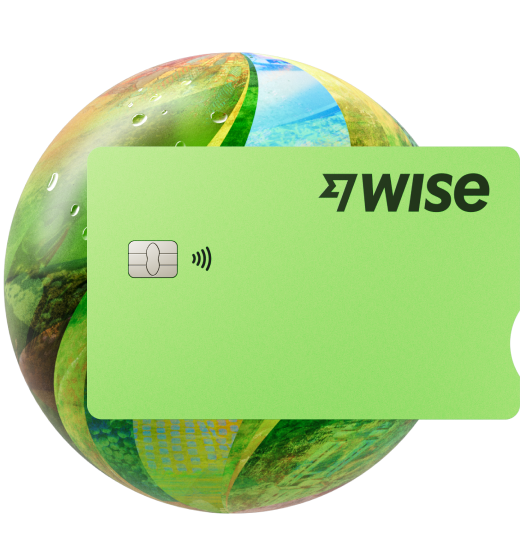Disclaimer
*Some products may be unavailable in certain regions. To explore the range of products and services offered in your region, please visit our website at [Wise](https://www.wise.com)
If you’re bringing goods into the UK from abroad, you may need to pay import duty and VAT. Taxes are fixed based on product type — so HMRC will look at the commodity codes describing your shipment to calculate what you have to pay.
Commodity codes, which are also sometimes called tariff codes, are used to describe products which are being imported. You’ll usually need to complete documentation showing the commodity code whenever you import, so border officials can check they’re safe and legal, and calculate any tax owed.
The UK trade tariff tells you all you need to know about paying tax and duty on your imported goods. Here you’ll find tariff codes, duty rates, licensing requirements and details about how to complete import documentation.

If you’re buying and selling goods abroad, you’ll need to be able to make and receive international payments cheaply and easily. With Wise Business you can pay your overseas invoices quickly and safely — with currency conversion carried out using mid-market rate. That means no hidden fees to worry about — just a simple, transparent charge per transaction.
Try Wise Business today to see how going borderless can help you grow your company.
If you’re importing into the UK you’ll need a 10 digit commodity code which describes your goods.
This code is made up of 2 elements. The first 6 digits are part of the globally recognised harmonised system (HS code, with the last 4 digits added for use within the EU and UK.
A commodity code contains multiple pieces of information which build on one another to provide a very detailed picture of the product being described. The number you see is actually made up of 5 different 2 digit codes, which each point to a certain chapter and section of the tariff code.
Let’s say you have a shipment of slippers coming into the UK. You’ll have a number which looks something like this: 6404.20.1000.
HS Chapter | 2 digits | 64 - Footwear |
HS Heading | 2 digits | 6404 - Shoes with leather soles and textile uppers |
HS SubHeading | 2 digits | 6404.20.10- Indoor shoes like slippers |
Country-specific code | 4 digits | 6404.20.1000 - full commodity code |
Let’s look first at the HS code which makes up the first 6 digits of the commodity code. The harmonised system is a globally recognised way of labelling goods, used since 1988. It’s a logically-ordered framework, split into sections, chapters, headings and subheadings.
You’ll start with a section or chapter which describes the product type or component material, and then choose the heading appropriate for your product. From within this heading, you can then choose more detailed subheadings to give the closest possible description available.

After your 6 digit HS code, you’ll find 2 further pieces of useful information, captured by the CN and TARIC codes.
The CN code is the combined nomenclature code used by EU authorities to track trade and calculate customs duty.
Then you’ll have the TARIC code, which shows any relevant trade policy or tariff measures imposed on this type of product in the EU.

A great place to start calculating your commodity code for import is the UK government’s trade tariff tool. Here you simply click through the HS categories, headings and subheadings to find the ones which best suit the products you’re importing. The tool will walk you through the process and then show you the code you need, as well as crucial information about duties payable, and any licensing or other regulatory issues you need to be aware of.
If you have any questions or can’t find the code you need for your goods, you can get in touch with HMRC to ask for guidance. Email a classification officer for help using the contact information available on the {UK government’s website](https://www.gov.uk/government/organisations/hm-revenue-customs).
| SECTION | CATEGORY | CHAPTERS |
|---|---|---|
1 | Animal & Animal Products | 1-5 |
2 | Vegetable Products | 6-14 |
3 | Animal or Vegetable Fats and Oils | 15 |
4 | Prepared Foodstuffs | 16-24 |
5 | Mineral Products | 25-27 |
6 | Chemicals & Allied Industries | 28-38 |
7 | Plastics / Rubbers | 39-40 |
8 | Raw Hides, Skins, Leather, & Furs | 41-43 |
9 | Wood & Wood Products | 44-46 |
10 | Pulp of Wood or of Other Fibrous Material | 47-49 |
11 | Textiles | 50-63 |
12 | Footwear / Headgear | 64-67 |
13 | Stone / Glass | 68-70 |
14 | Natural or Cultured Pearls | 71 |
15 | Base Metals | 72-83 |
16 | Machinery / Electrical | 84-85 |
17 | Transportation | 86-89 |
18 | Precision Instruments | 90-92 |
19 | Arms and Ammunition | 93 |
20 | Miscellaneous Manufactured Articles | 94-96 |
21 | Works of Art | 97-98 |
Try Wise to arrange cross-border business payments simply online, using the mid-market exchange rate.